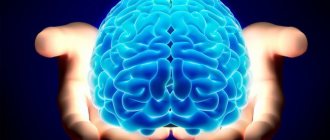Causes of depression
The main reason that leads to depression is an incorrect interpretation of an unpleasant event. Why is this happening? Here a more subtle differentiation of factors occurs. Depression can be caused by pessimism, lack of resistance to stress, lack of relaxation skills, inadequate coping strategies (for example, if a person runs to a liquor store in a stressful situation), destruction of the protective mechanisms of the psyche, and negative experiences of depression in the past.
As a result of an incorrect interpretation of an unpleasant event, so-called irrational cognitive formations arise, in other words, complexes. These are attitudes such as: “Nobody loves me”, “I am a loser”, “It is impossible to achieve success in our country” and others. They are generated by the fact that a person focuses attention only on the negative. In general, the main cause of depression lies in a person’s personal qualities.
Symptoms of depression
Symptoms of depression vary in their semantic characteristics, intensity of expression, and duration of impact. Many manifestations of the disorder are masked, and their negative impact is not recognized by the person. Other signs of the disorder, such as pessimism, despondency, loss of vitality, are often considered by a person as a consequence of fatigue, and, accordingly, do not attach much importance to their existence. Or the person attributes such phenomena to his own laziness and begins to engage in self-accusation. The third symptoms are very similar to signs of somatic diseases, which is why they are interpreted by people as signals of physical illness.
However, without exception, all manifestations of affective disorders significantly worsen a person’s quality of life and force them to give up many enjoyable activities. If depression is not treated in a timely manner, then gloomy, depressing thoughts, feelings of futility and hopelessness, ideas of guilt and self-reproach often lead to suicidal actions, which pose a direct threat to the premature end of life.
Depression can occur in anyone, regardless of their age, gender, level of education, marital status and social status. Depressive disorder may be a response to a previous trauma or stressful event. However, very often symptoms appear for no apparent reason, and a person cannot independently determine the reasons for the decrease in mood.
What is cognitive therapy and how does it work?
Experiments in hypnosis: hypnotic phenomena in deep hypnosis (somnambulism). Hypnosis training
How does hypnosis work?
Hypnosis affects several of these causes simultaneously, and at a very deep level. During therapy, the hypnologist gains access to the person's unconscious, which allows him to study his specific case. Hypnosis also helps a person relax, which allows him to instill positive beliefs and constructive programs for responding to stress.
In a state of hypnotic trance, the cognitive barrier is bypassed, and therefore positive attitudes become part of the personality much more easily. Hypnotherapists often say that the results are permanent, but in reality this is not always the case. Without deep elaboration of useful beliefs, the effect will only be short-term. Therefore, hypnosis must be supplemented with other methods, which will be described further.
Hypnosis can also treat various forms of neuroses: neurasthenia, psychoneurosis and other disorders.
Tactics and techniques for inducing trance
There are quite a few tactics for inducing a hypnotic trance, and their effectiveness will be different for each person - in this regard, the specialist often chooses which one to use in a particular case.
The most commonly used methods are:
- Direct suggestions .
Such suggestions are used in authoritarian, directive hypnosis, when the hypnotherapist, using his authority, gives direct commands to enter a trance. Further work is also based on this principle - the hypnologist gives a command, which is executed by the patient. This technique works well with susceptible people who are prone to suggestion. - Fixation on any object - a pendulum, the hypnotist's hand, etc. In this case, the patient's attention is kept on the mentioned objects, while the necessary suggestions are given to him. It is also possible to fixate attention on an imaginary object.
- The "confusion" method. This method of inducing a hypnotic trance is based on the person’s need to get out of the state of cognitive overload caused by the hypnologist. At the same time, for example, they name several statements, with each of which individually the patient can agree, but in the general context they contradict each other. This causes confusion in the patient and the need to somehow resolve the incomprehensible situation. At this moment, the specialist gives the necessary instructions to enter a trance.
- Template break. With this method, the hypnologist selects some standard pattern of behavior (it can be both verbal and non-verbal), for example, a handshake, a greeting - something that we do “automatically” and expect the same reaction from others - and at a certain moment produces an action inappropriate to the situation, which also causes confusion and a trance state in the patient, after which the required suggestions are made.
- Age regression. This method is especially effective when it is necessary to access the patient's past. At the same time, the hypnologist mentions the action that we perform every day - for example, we have dinner, and states that all days are similar to each other - Monday is Saturday, and Wednesday is Friday, one week is another, June is March, and May is February - we have dinner every evening, but we can separately highlight the New Year's dinner, which occurs year after year. Significant dates are then mentioned - for example, the patient's birthdays, through which memories are transferred to an earlier period - right up to childhood, after which the therapeutic work begins.
As a rule, a good specialist has many similar techniques in his arsenal and selects them in each individual case, depending on the character and temperament of his patient.
Is hypnosis always necessary?
Hypnosis is not always needed, it all depends on the intensity of the depression. This method shows itself well as an integral part of complex psychotherapy for the treatment of complex and advanced cases of depression. But if we are talking about mild or everyday (that is, pseudo-depression) forms, then you can get by with other methods, which are discussed in the section “Alternatives to hypnosis.”
Can depression be treated with hypnosis? Yes, but not in all cases. Hypnosis is more needed in order to normalize a person’s emotional state. But if complex therapy is not carried out, the risk of relapse is very high, since a person drives himself into depression. It takes the same amount of effort to get into extreme despair or into a state of inspiration. Only the person himself decides where he wants to come. Unfortunately, many choose the first option.
Indications and contraindications for the use of hypnosis
Since trance is a natural state of a person, there are no contraindications for treating depression with hypnosis .
In a trance state, a person can receive a lot of positive emotions, gain new experiences, restore strength - all this will help cope with depression and make it easier.
The only exception may be a biased attitude towards hypnosis as such, fear of “entrusting your consciousness” to another person, fear of one’s own reactions in a trance state, submission to someone else’s will - although in fact the hypnotherapist cannot instill in a person something with which he will not be internally I agree - this suggestion will be rejected as unacceptable.
Effects of hypnosis in treating depression
Before you consider whether hypnosis can treat depression, focus on its causes. If a person is a pessimist by nature, it is impossible to make him an optimist at once. But if hypnosis does not work on him, he can once again become convinced that nothing will help in his case.
The procedure itself is pleasant: the person lies in a comfortable position, listens to the therapist’s pleasant voice, or relaxing music, and all tension goes away. Therefore, some patients may experience hypnomania. In this procedure, the neurotic sees a panacea, which forces him in any problematic situation not to try to solve it, but to get rid of symptoms through hypnosis. Naturally, like any addiction, in the future it can plunge you into depression. But everyone is different, and therefore hypnosis can lead to hypnophobia. This state is completely opposite to hypnomania and is accompanied by a panicky fear of hypnosis. In this state, the effectiveness of treatment is close to zero, since high-quality therapy is possible only if the patient trusts the hypnotist.
Types of hypnosis for depression
At the moment, more than 10 types of hypnosis are known. However, they all work on the same principle, that is, first the patient is put into a hypnotic trance, and then suggestion occurs. The difference lies only in the approach to therapy.
To combat depression, the following types of hypnosis are most effective:
1. Classic, which is the most common. In this case, the impact on human consciousness is not hidden, but obvious. The features of this type of hypnosis are:
- suggestion is carried out in an unobtrusively stern, authoritative voice;
- quick introduction to trance;
- sudden exit from a hypnotic state;
- all actions during trance are carried out through orders, authoritative phrases and clear instructions.
Classic hypnosis for depression leads to the patient losing self-control during the session, and this is the main disadvantage of this type of influence. The fact is that if an inexperienced hypnologist works, he can harm the patient.
The main method of treatment for many addictions, such as alcoholism, drug addiction or smoking, is the use of a “key-lock”. Using clear formulations in his work, the specialist prohibits the consumption of alcohol, causing a feeling of disgust towards it. This type of hypnosis is equally effective in relieving anxiety and depression.
2. Eriksonian.
This is the exact opposite of the classic type of hypnosis. In this case, suggestion occurs smoothly and unobtrusively. In addition, the patient has a choice: to accept the specialist’s instructions or refuse them. The main goal of Ericksonian hypnosis is to allow the patient to understand his dreams, true desires, as well as other forms of the subconscious. The introduction of a person into a trance is carried out smoothly and gradually, which greatly facilitates the specialist’s task. First, the hypnologist asks the patient to take the most comfortable position possible.
Autogenic training
This can be said to be the main alternative to hypnosis. A person practicing autogenic training is able to put himself into a light trance on his own, without specialists. This method has a good effect on mild forms of depression or if the person is generally depressed. In addition, those who regularly practice autogenic training are more protected from depression. Therefore, it can be considered an effective method of prevention.
The success of autogenic training has been proven even in historical examples. The famous psychologist Viktor Frankl spent several years in Nazi concentration camps, where he not only became stronger psychologically, but also helped turn the sad situation to the benefit of many other prisoners. And he owes much of his success to autogenic training.
What is depression
Experts in the field of psychology have long divided depression into several types: endogenous, deep and neurotic. With endogenous depression, a person is overcome by an irresistible melancholy, he is far from reality and goes into his own thoughts, movements become slow, and solving even the most insignificant problems becomes impossible. A deeply depressed person blames only himself for any failure, engages in soul-searching and destroys himself with negative thoughts. Neurotic depression drives a person into a dead end, depriving him of joy and positivity. He is constantly in a bad mood, sleeps poorly, and often gets sick. All these types of depression require mandatory correction. Hypnosis for depression and anxiety is the first aid for these types of disorders.
Meditation
Meditation now is not just some kind of practice, but a whole class of psychotherapeutic techniques aimed at different tasks, but united by one principle. Autogenic training, it must be said, is also a meditative technique, but it is placed in a separate section due to its complexity and ability to plunge into a deeper trance.
But even the simplest meditation, which involves focusing on breathing, produces results if it is constantly practiced. At first, a person needs more time to relax, but as he trains, he learns to very quickly normalize his emotional state.
In general, there are a huge number of meditation techniques, and everyone can choose the one that best suits their tasks. For example, use visualization or affirmations, or aromatherapy. All these techniques give good results and help get rid of stress, anxiety, and worry.
What are alternative treatments to hypnosis for depression?
As we mentioned earlier, hypnosis will provide the greatest benefit when combined with alternative treatments.
However, if the patient is prone to hypnomania, suffers from hypnophobia, or has a mild/moderate form of psycho-emotional disorder, he can be helped using exclusively alternatives.
Auto-training for the treatment of depression
Autogenic training. This alternative method allows you to independently, without the help of a hypnotherapist, plunge into a state of trance (complete relaxation).
Its effectiveness has been proven by science and the experience of the famous psychologist Viktor Frankl, who lived for several years in Nazi concentration camps.
According to his work, it was thanks to auto-training that he saved not only his psychological health, but also helped his cellmates. Moreover, those who regularly engage in auto-training are less susceptible to new waves of depression or despondency.
This method can also be suggested by a doctor as a prevention of psycho-emotional disorders. You can see an example of what autogenic training might look like in the photo below.
Meditation to treat depression
First of all, you should not perceive this method only as an Eastern practice. Therapists are convinced that meditation is a complete treatment for depression and other disorders in mild and more complicated stages.
In combination with other means (for example, autogenic training or medications), breathing meditative exercises will help a person independently cope with attacks of nervous breakdowns or apathy.
For more effective therapy through meditation, the following skills can help the patient: visualization to analyze the inner self and affirmation.
Aromatherapy will also enhance the result and bring a person closer, since correctly selected odors will relax the nervous system to concentrate on complete relief from worries and anxieties.
It is worth noting that beginners in meditation will need more time to relax and normalize their breathing. However, over time, efforts to improve the quality of practice will not be in vain and a positive result will not be long in coming.
Reframing or reappraisal of the situation in the treatment of depression
Agree, any event can be presented from two sides. One person can talk about the bad as a necessary experience, thereby setting himself up for the positive.
And the other will talk about something as good as possible, but in the context of evil intent, at the same time driving himself into despondency.
This method, called “reframing,” involves re-evaluating the situation or experience that traumatized the person.
The task of the method of promoting correct revaluation is to realize that the world has not ended and there is always something that will be better.
If the patient learns to find opportunity and value even in the negative, he will be able to overcome depression, despondency, and also avoid internal conflicts throughout his life.
Reframing is most effective when combined with autogenic training or meditation.
Mediation practices: affirmation and afformation
So, we have already discussed the benefits of meditation itself, but these two techniques will be especially useful in the fight against psycho-emotional disorders and depression.
Affirmation is aimed at changing the emotional as well as mental background. The practice consists of tantras (repetitive words). The text must be repeated out loud from 50 to more than 100 times during one meditation.
Such actions will help you focus on a specific thought, awareness of a situation, or self-knowledge. As you know, the brain is self-suggestible and susceptible to emotional influence.
If a person constantly tells himself “I love my life”, “I love my job”, “I love my appearance”, then in reality this will be the case.
The only drawback of this practice is that repeating the same phrases out loud throughout the day for several weeks or months is not always possible and not everyone has the opportunity, including the physical one (impaired mechanical memory and other diseases).
Afformation is aimed at reassessing the situation, as well as changing the point of view on the experienced negative experience or incident. The practice is very similar to the previous one, but is its improved form.
Afformations are also tantras, but in the form of questions. This technique is based not on mechanical memorization (which is the main drawback of affirmations), but on logical one.
A person regularly asks himself the same questions, which help him regularly introspect and reassess his own point of view.
The patient gets to know himself from the inside and works through all the painful gestalts. Both techniques have their place and are considered effective in the fight against neuroses, depression and other psychological health disorders.
Hypnotherapy in combination with medications
Both a general practitioner and a hypnosis specialist can offer the patient a combination treatment that will speed up the healing process and reduce the likelihood of a recurrence of a neurotic disorder or panic attack.
Most often, doctors prescribe antidepressants designed to normalize the conduction of neural signals in the brain. Thanks to them, a person will feel calmer and more confident.
At the same time, in some cases, hypnosis shows significantly better results compared to medications. For example:
- To help a patient recover from mild to moderate depression, he needs to attend one session with a hypnotherapist or take antidepressants for more than 2 weeks.
- Often people independently decide to start treatment with certain medications, but incorrectly selected medications can cause worsening of the condition or life-threatening side effects.
- Real effective antidepressants (not generics) are often expensive, while a session with a hypnotherapist can be attended for a minimal price (or completely free, using independent auto-training or meditation).
- Hyptotherapy treats the root cause, and medications treat exclusively physiological or somatic symptoms.
Reframing
Reframing is actually what propaganda does. They choose the interpretation of the available facts that is more beneficial to them. One and the same situation can inspire one person, while another can become mired in depression. It all depends on how he interprets the situation.
The purpose of reframing is to re-evaluate the case in a way that makes the person stronger and motivates him to improve his life. For example, one person regards a huge amount of work as a deprivation of personal life. The other tries to find opportunities in this. And he does find it. Only a person who works hard can become a professional in his field. If the first person can overestimate the fact that his boss is overloading him with work, his work will be more enjoyable, and he will gain useful skills that he can use in another job.
Signs of Depression
There is no need to assume that depression is simply a bad mood caused by difficulties at work or problems in relationships with loved ones. In fact, it is a serious disorder that occurs suddenly or within a few days (a couple of weeks at most).
Many depressions are triggered by triggers - serious events that undermine emotional stability and the ability to look at things objectively. A person loses interest in what previously fascinated and interested him; hobbies do not bring positive emotions; what makes other people happy causes apathy and disgust. Often, people with depression do not leave the house for weeks or days, lose interest in communicating with other people and give up their favorite activities. This, by the way, is one of the main differences between this state and simple stress - in the latter case, a person can still enjoy his favorite activities, and after a certain reboot he returns to his usual standard of living.
In a depressed state, a person cannot independently find a way out of the situation. It seems to him that this is now a permanent way of life, from which it is impossible to get rid of. Such fears settle so firmly in the subconscious that they cannot be separated from normal thoughts; depressive emotions seem to be an integral part of everyday life. The perception of the surrounding world and reality changes completely, the beliefs of outsiders do not help, there is no objective view of things.
Affirmations and affirmations
Let's look at two more special meditative techniques that are aimed at slightly different tasks than just relaxation. The first is capable of changing the emotional state, and the second is able to reinterpret established beliefs or view of the situation.
Since affirmations are a type of affirmation, let's talk about them first. Affirmations are verbal formulas that a person needs to repeat many times. This allows him to focus on a specific thought. And our brain is designed in such a way that any phrase has emotional associations. Therefore, if you repeat it many times, for example, often saying “I love to work,” then over time the corresponding feelings will appear, and working will really be more pleasant.
With the help of affirmations, you can instill in yourself any positive beliefs. The disadvantage of this technique is that they need to be recited many times over a long period of time to ensure stable results, since they are based on rote memorization, which is quite ineffective.
A more advanced technique is affirmations, which are the same affirmations, but in the form of a question. They allow you to explore your beliefs more deeply. They are based on logical memorization, so they are more effective. They are able to change a person’s beliefs at a deep level.
However, both techniques can be used. If some belief seems completely alien to you, then it is better to start with affirmations. But when you are convinced of its correctness, sometimes it is enough to remind yourself of this once, and your attitude towards an unpleasant situation completely changes. These techniques complement each other and are not interchangeable.
How a hypnologist uses hypnosis for depression
During the session, the specialist uses a hypnotic trance so that a person can concentrate on a specific problem, find the reasons that caused depression, while turning to the unconscious, because it is this that contains all the experience acquired from early childhood.
During the procedure, the hypnotherapist has the opportunity to create with the patient other ways of responding to a given situation, as well as get rid of those patterns of perception and behavior that are ineffective.
Thus, we can say that a hypnologist works with a person’s attention and directs it in the right direction at the right time in order to reassess the events that caused depression.
Articles recommended for reading:
- How to get rid of apathy
- Medicinal plants and their use in magic
- Karmic healing of soul and body
It is worth noting that in this process, exclusively the patient’s capabilities are used, as well as his ability to correctly apply his experience, including negative ones, in different situations.
Most often, this is quite enough to improve well-being in a depressed state, as well as develop the skills that will be required to overcome the stressful circumstances that caused it.
Immersing a person in a trance contributes to his recovery, but for a positive effect it is necessary to follow the rules.
The hypnosis session for depression itself is divided into several stages:
- First, a quiet and calm atmosphere is created in the office where the procedure will be performed, so that nothing depresses or irritates the patient. There should not be any bright objects in the room, otherwise they will distract the person’s attention from the doctor, which will complicate the introduction to trance.
- At the second stage, the specialist needs to capture the patient’s attention. That is, the hypnologist concentrates the patient on a specific object, for example, a pendulum, a clock, in order to put him into a trance state and begin work.
Having reached the line between wakefulness and sleep with the patient, the doctor begins to understand what caused the depression. After this, he gives an attitude towards recovery, as well as the formation of a positive outlook on the problems and the world around the patient. In the process of work, the doctor does not put pressure on the person in any way, does not depress his thoughts, but only provides assistance in finding a way out of the space of the disease.
After this, the specialist takes the patient out of the trance state and, at the level of consciousness, helps him deal with his problems.
Photographing the aura and energy centers (chakras)
Analysis of the aura glow will help you understand the causes of many problems related to health, emotional state, communication with other people, understanding yourself and your inner world
Natalya Morgunova
Certified color therapist (ASIACT International Academy of Color Therapy, UK).
You will receive a detailed explanation regarding the individual characteristics of your aura. Our master will determine the level of energy in each chakra and in the entire energy system as a whole. According to the data determined by the auro-sensor, you will learn about how the energies of Mind, Body and Spirit are distributed in your life and much more.
Find out more
Hypnosis and drug treatment
In the treatment of depression, antidepressants are used - special drugs that normalize the balance of neurotransmitters in the brain. These are biologically active substances that affect a person’s emotional state.
Compared to drug treatment for depression, hypnosis is more effective and is generally a preferable treatment method for the following reasons:
- Mild forms can be cured with hypnosis in one session, while antidepressants must be taken for at least two weeks to feel any effect.
- Choosing the wrong class of antidepressants can lead to aggravation of the condition.
- High-quality drugs are expensive, while hypnosis can be quite affordable or even free (autohypnosis, for example).
- Medicines have a greater number of side effects, the number of which depends on the price of the drug.
- Antidepressants only affect the symptoms of the disease, not its cause. Hypnosis, on the other hand, can instill rational beliefs in one session, and the result is reinforced by cognitive behavioral psychotherapy.
Hypnosis: in which cases treatment is not effective
Like other methods, hypnosis is not indicated for treating all cases of depression. If the intensity of the disease is at the first or second stage (mild/moderate), doctors recommend drug treatment or the use of alternatives.
In severe cases, hypnotherapy is an effective component of complex treatment, since its goal is to normalize emotional balance.
In addition, it is important to remember that the result of hypnosis will only be if a person strives to get it himself and tries to follow all the expert’s advice.
Otherwise, therapy, which is inextricably linked with self-hypnosis and self-awareness, will remain unsuccessful.
conclusions
Does hypnosis help with severe depression? Yes. But in this case, you need to use other methods, which are described above. Hypnosis also has a number of contraindications. However, their number is significantly less than that of drug therapy. Mild forms of depression do not require the intervention of a hypnologist at all. In general, preventing depression is simple - a positive outlook on the world, no matter how trite it may sound. Optimists do not become depressed because they are able to see real opportunities to overcome negative situations.
Treatment of neuroses with hypnosis
Nowadays, real classical hypnosis is very popular in the treatment of neuroses. There are various techniques that can quickly bring a person out of a neurotic state, as well as restore the will to live and good mood.
Let's call the main stages of ridding a patient of neuroses hypnosis. This:
- Preliminary diagnosis of symptoms, as well as initial consultation and competent choice of treatment methods;
- Conducting hypnosis;
- Prevention of neuroses, which is aimed at preventing all relapses of this condition.
Psychiatrist, psychotherapist and psychologist in the fight against depression
You should immediately take into account that a psychiatrist and psychotherapist, unlike a psychologist, are specialized medical specialists.
- A psychiatrist is a doctor whose functions include the fight against mental illness, treatment of neuroses and depression. In her practice, she uses special types of techniques, prescribes medications, and physical procedures. His competence includes the treatment of depression with hypnosis, medications for acute mental pathologies - schizophrenia, mental retardation, epilepsy, as well as other, less severe illnesses - neuroses, depression, alcoholism, drug addiction, etc.
- The psychotherapist works at the level of psychological type of influence - clarification, conversation, finding solutions to problems together with the patient. Also, this specialist prepares the patient for accelerated and effective work with a psychiatrist, and can prescribe examinations, medications and physical procedures.
- The tasks of a psychologist, who is not a doctor and does not have the right to prescribe medications and examinations, include consulting the patient. Thanks to his knowledge of human psychology, he shows the right way out of the problem. Clinical psychologists use modern testing methods to identify problems that cause psychological disorder.
To identify the disease, experienced specialists use short questionnaires - screening tools. Thanks to this, it is possible to determine whether the patient has chronic depression, symptoms and methods of treating depression, what form it is and its severity. In many Western countries, this technique is mandatory for pregnant women.
Diagnosis also involves identifying symptoms associated with depressive disorders. Correct diagnosis allows us to identify whether there are somatic causes of the disease and select adequate treatment to eliminate the factors that provoke depression.
To fully understand the picture of the disease, the doctor needs to become familiar with the symptoms that indicate depression, and not another psychological disorder. The main features include:
- despondency and depressed mood for a long time;
- desire to retire, withdrawal “into oneself”;
- bad feeling;
- development of an indifferent attitude towards family and friends;
- apathy;
- yearning;
- tearfulness;
- mood swings;
- lethargy;
- outbursts of aggression and anger;
- panic attacks;
- formation of phantom pain;
- criticism is categorically not accepted;
- negligent attitude towards work, study, fulfilling family obligations;
- impaired concentration;
- development of phobias, fear of death.
A person ceases to strive to satisfy natural desires, especially in adolescents and the elderly. If any of the listed symptoms are observed, you should immediately contact a specialized specialist and begin treatment for depression. The problem is addressed to psychologists, psychiatrists and psychotherapists. Doctors identify the degree of complexity and select adequate therapy.
How is the treatment carried out?
A hypnotherapy session begins with a conversation between the hypnologist and the patient. After identifying the problem, the specialist proceeds to a hypnotherapy session. For this, the person is put into a trance state. Each hypnotherapist has his own techniques. Some use relaxing music for this, others use incense, and others use a pendulum. There are hypnotherapists who put you into a trance with their gaze. But this ability is inherent in only a few.
In a state of trance, the human brain works in a muted rhythm. Visions and voices that appear to be in a deep trance state are perceived by the patient as reality. Through hypnosis, one’s own reality is created, which is gradually brought to life. The image created by the patient during a hypnotherapy session is imperceptibly transferred to the external and internal world.
As a rule, hypnosis for diseases is used in complexes. That is, one session will not be enough to cure, for example, severe depression or phobia.
Hypnosis treatment - benefits and dangers
As we have already said, hypnosis is a very effective method of treating many diseases of the nervous system. However, this treatment method may not be suitable for all people. For some people, hypnosis may be strictly contraindicated. Therefore, it cannot be applied to everyone.
To determine the possibility of carrying out hypnosis (hypnotherapy), a hypnologist or psychiatrist carries out a preliminary diagnostic procedure and determines the possible degree and need for the use of hypnotherapy in each specific case.
It is also very important to remember that unscrupulous doctors, psychologists, and even criminals can practice hypnosis. These people often use, openly or secretly from a person, methods of hypnotic influence for their criminal purposes. This is often used to motivate unnecessary treatment, unnecessary examinations, illegal actions, or the transfer of property and money to a criminal. Therefore, it is necessary to be very careful when choosing a hypnologist.











